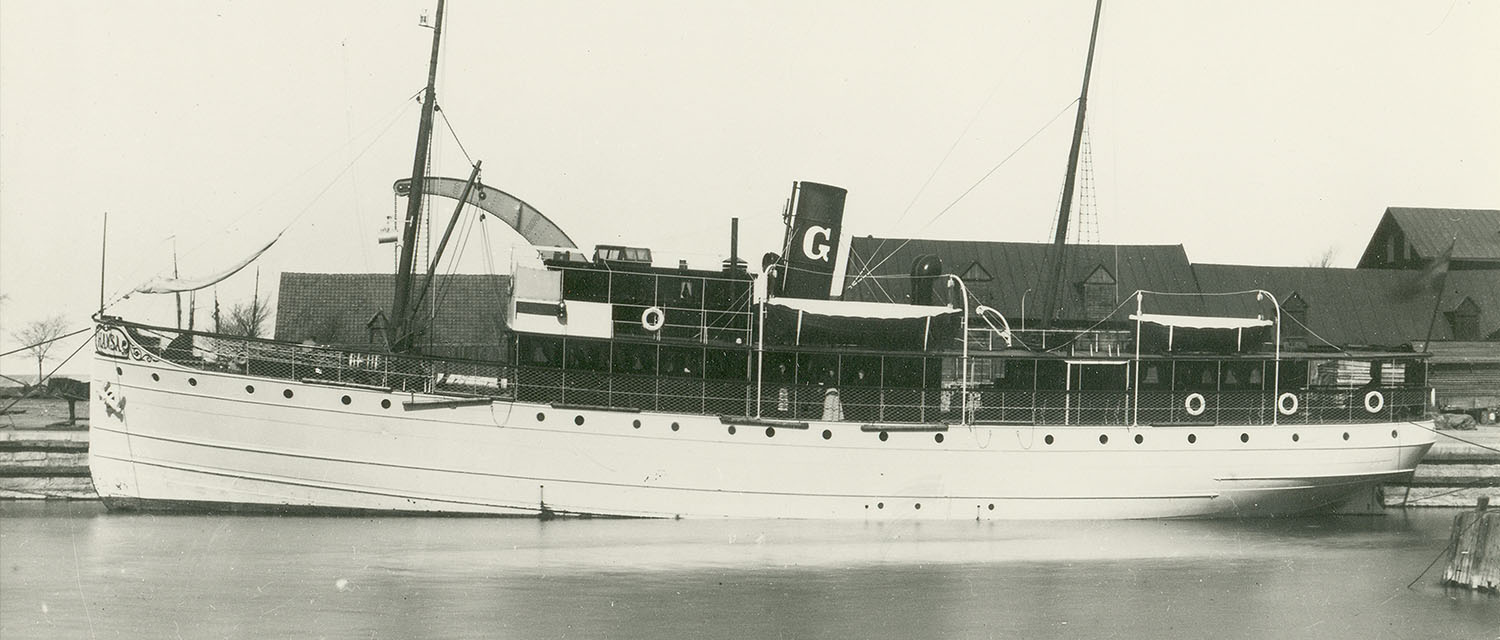Just before midnight on 23 November 1944, Hansa departs Nynäshamn for Visby with 86 people on board. At 05:57, a powerful explosion occurs and Hansa sinks within a minute. The time can be determined precisely using the clock from the radio cabin that floats ashore at Björkskär two weeks after the sinking.
Facts
Deep: 100 metres
Build: 1899
Length: 50 metres
Width: About 8 metres
Shipwreck: 1944
Ship type: Passenger ship
Only two people survived, Arne Thuresson and Arne Mohlin. After the accident, they recounted the course of events. Both were asleep at the time of the explosion, Thuresson in the radio cabin and Mohlin in a cabin further down the ship. In what would be Thuresson’s rescue, the explosion rips off the entire radio cabin and flings it away from the ship.
Mohlin is woken by the explosion and immediately runs up onto the deck. As Hansa sinks stem first, Mohlin jumps overboard and swims away as fast as he can to avoid being sucked down as the ship sinks.
Mohlin and Thuresson manage to get themselves to one of Hansa’s life rafts. There are some supplies on the raft, as well as blankets and rescue equipment. At noon, the raft is detected by an aircraft and the two are rescued.
Hansa was discovered in 1988 at a depth of 100 metres. The wreck is exceptionally preserved except for the prow, which is blown off and lies a bit further away from the rest of the hull. The ship’s bell has been salvaged and is currently located in Visby Cathedral.
In 1992, information from Russian archives emerged that it was the Russian submarine L-21 that had sunk Hansa.


